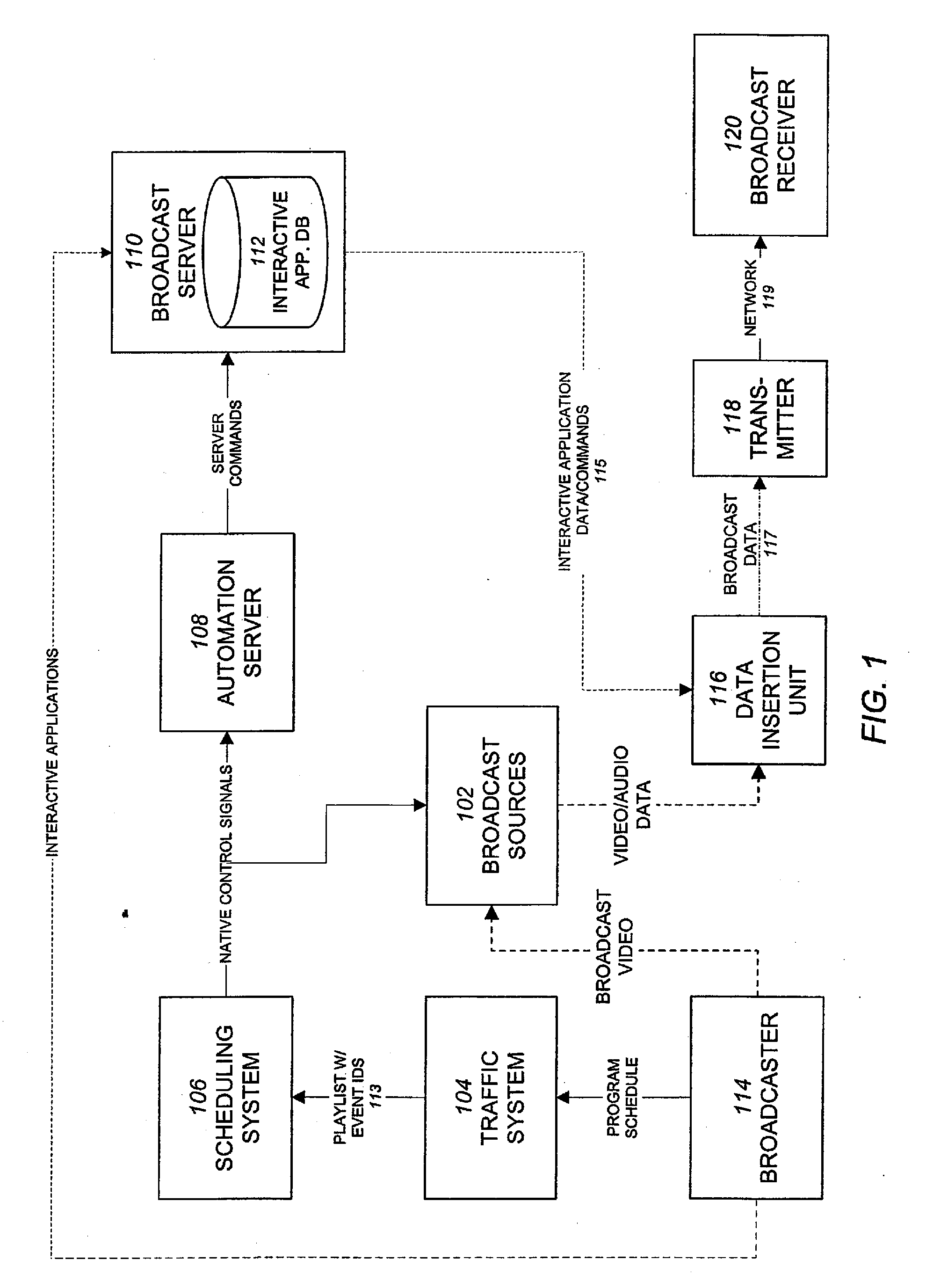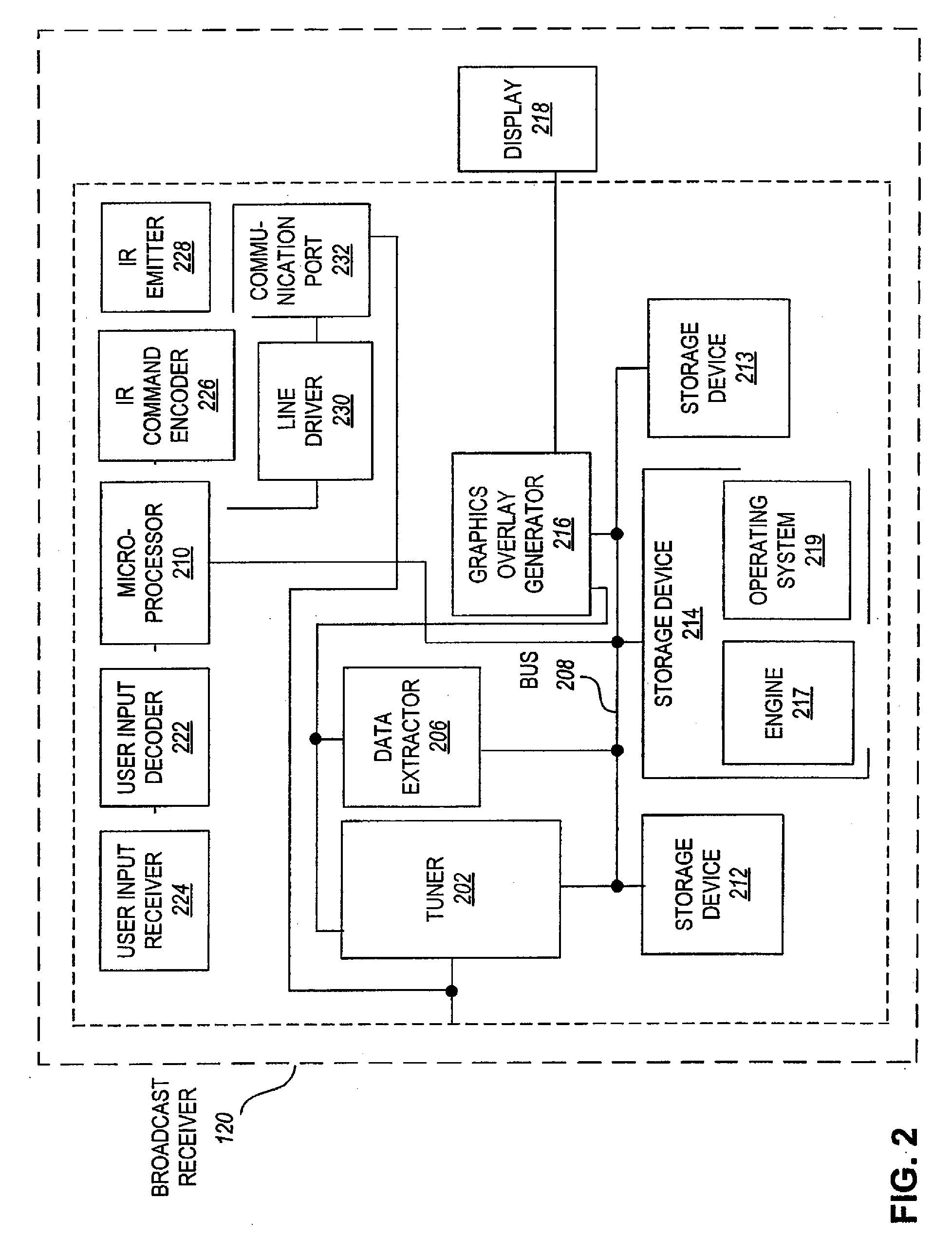Synchronous updating of dynamic interactive applications
a dynamic interactive and application technology, applied in the field of interactive television, can solve the problems of blocking the presentation of broadcast programs, inability to display the interactivity of shows, and inacceptable to advertisers, and achieve the effect of easy interface with different scheduling systems
- Summary
- Abstract
- Description
- Claims
- Application Information
AI Technical Summary
Benefits of technology
Problems solved by technology
Method used
Image
Examples
Embodiment Construction
[0048] Referring now to FIG. 1, there is shown an illustration of a system in accordance with the present invention. It will be appreciated that the system illustrated in FIG. 1 may be incorporated in to larger, more complex systems while still providing the features and benefits of the invention.
[0049] A. System Overview
[0050] Generally, system 100 includes a scheduling system 106, an automation server 108, a broadcast server 110, a traffic system 104, broadcast program sources 102, a data insertion unit 116, and a transmitter 118. These elements are typically used in an embodiment used by a cable operator at a cable head end. Implementation of the present invention in other installations is certainly feasible. Broadcast receivers (BR) 120 are remotely distributed in viewers' homes, offices, and the like. The person or persons receiving the programs are referred to as “subscribers” or “viewers.”
[0051] The system 100 cooperates with multiple broadcasters 114. A broadcaster 114 pro...
PUM
 Login to View More
Login to View More Abstract
Description
Claims
Application Information
 Login to View More
Login to View More - R&D
- Intellectual Property
- Life Sciences
- Materials
- Tech Scout
- Unparalleled Data Quality
- Higher Quality Content
- 60% Fewer Hallucinations
Browse by: Latest US Patents, China's latest patents, Technical Efficacy Thesaurus, Application Domain, Technology Topic, Popular Technical Reports.
© 2025 PatSnap. All rights reserved.Legal|Privacy policy|Modern Slavery Act Transparency Statement|Sitemap|About US| Contact US: help@patsnap.com



